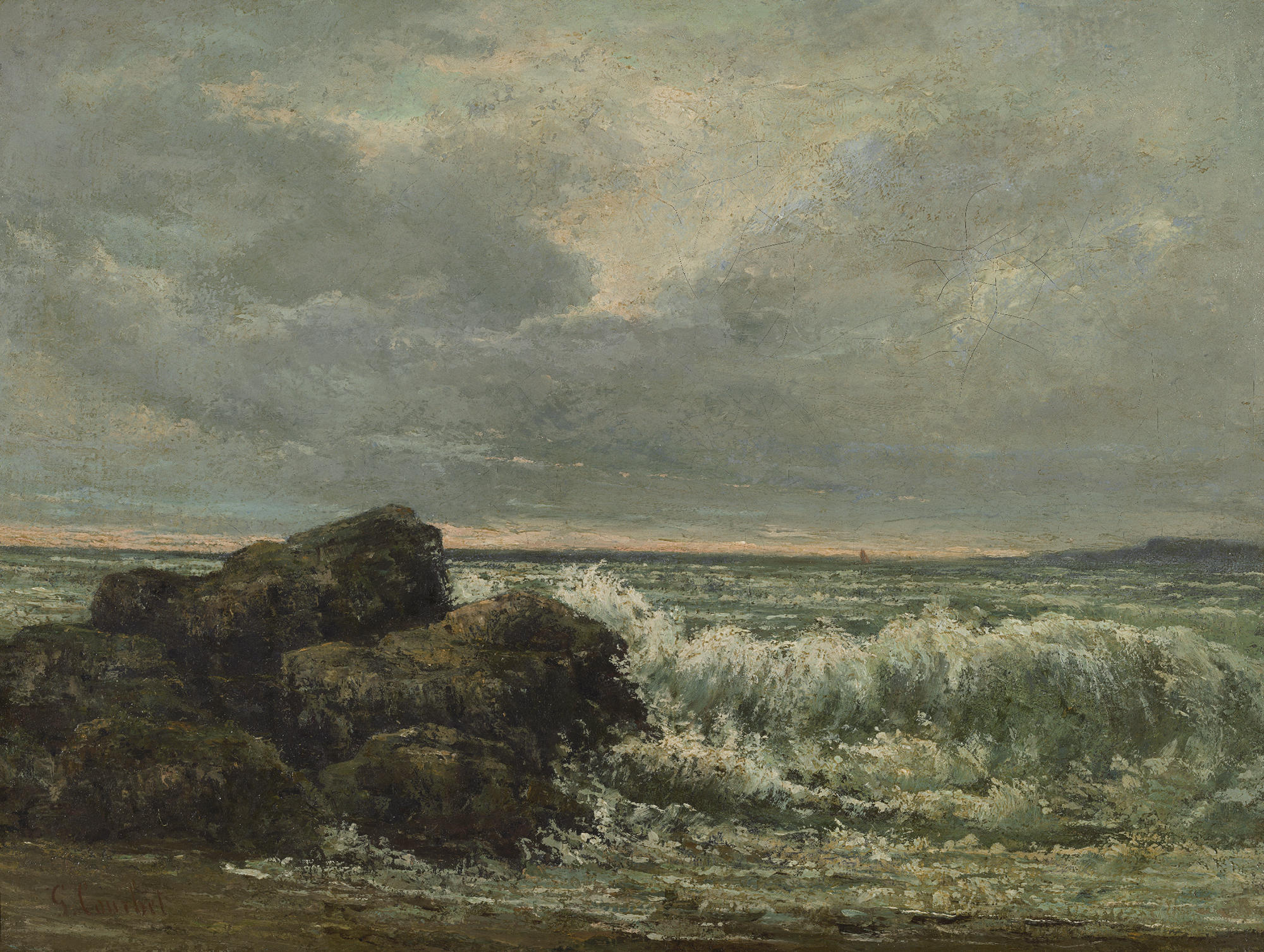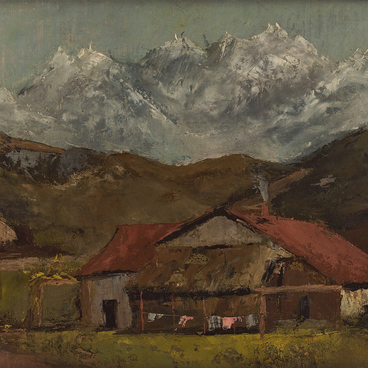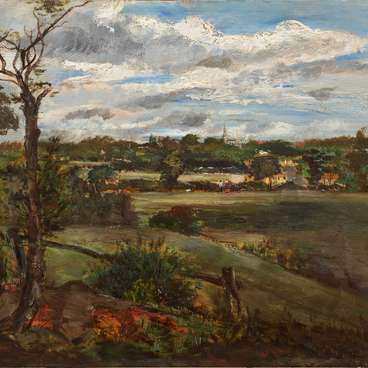Gustave Courbet, one of the key figures in French art of the 19th century, was a representative of realism, a trend associated with the positivism philosophy. Courbet was the one to give this trend the spirit of grand style. This was seen not only in his portraits and narrative monumental compositions on a modern theme, but also in his landscapes, which the artist presented in a museum collection. Asserting the need to paint from a model and to depict only that which the eye can see, the artist achieved the effect of materialness in his paintings and an almost tangible dimensionality of the presented motif. The search for that monumental nature is intrinsic to his paintings, just as it is to genre paintings. In the painting Wave, the majestic strength of the sea is evident. It seems that Courbet does not create with paint but sculpts the shape and the wave itself, as well as the rocks on the shore, recreating nature in all of its authenticity. Courbet manages to bring a special grandiosity to an ordinary motif without resorting to idealization. He saw the essence of realism in this, affirming through his art that painting is ‘concrete art and cannot consist of anything else besides the depiction of real and existing things.’ The materiality of the paint gives the landscape a lofty and heroic character.
#1

Gustave Courbet
Wave
#2
читать дальшескрыть
00:00
00:00
1x
Wave
Время создания
near 1869
Размер
48x65,5 cm
48х65,5
48х65,5
Техника
oil on canvas
9
Открыть в приложении
Поделиться





